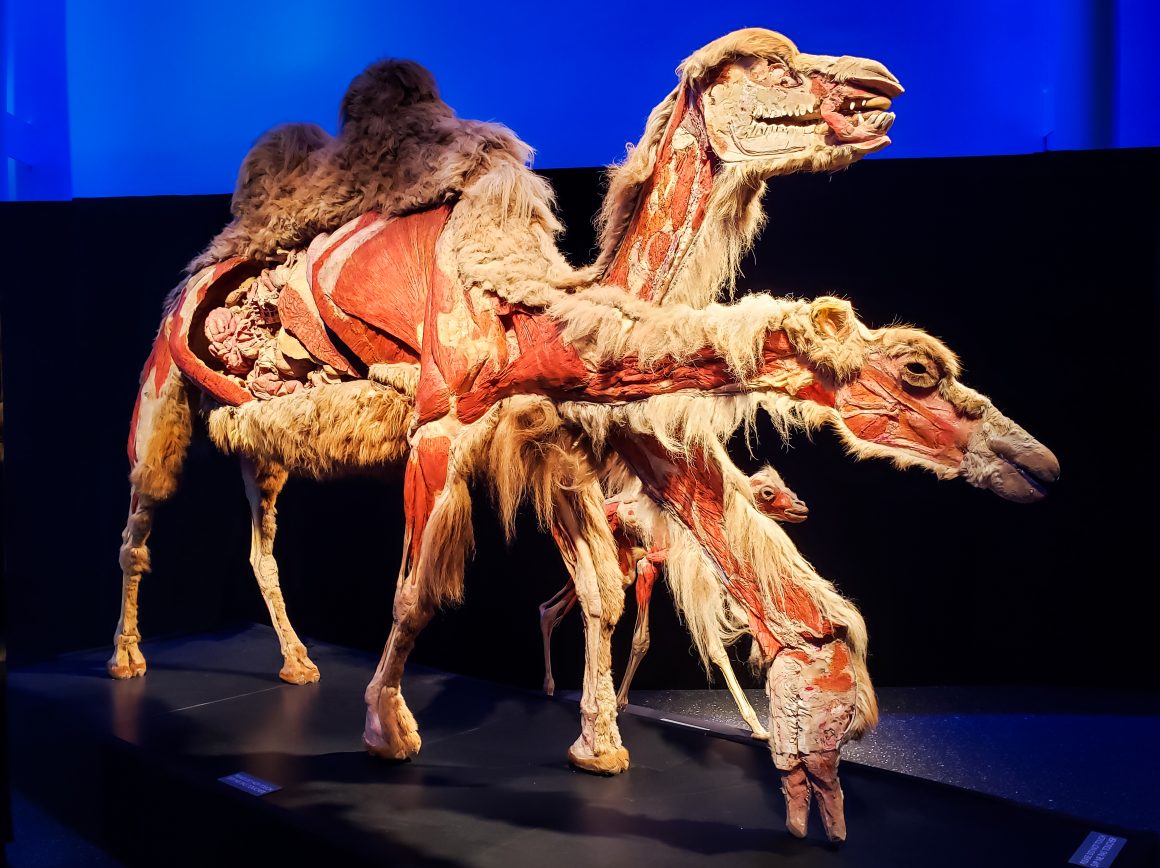
Get under nature’s skin at Telus Spark
By Kristy Koehler, November 5 2019—
Body Worlds: Animal Inside Out is helping science aficionados get under nature’s skin — and under fur, feathers and muscles too. The exhibit, opened on Oct. 25 at the Telus Spark science centre, showcases the anatomical insides of various creatures.
The specimens on display have been preserved through plastination — a method of halting decomposition by extracting all bodily fluids and fats and replacing them with various plastics.
“It was developed in 1977 by German anatomist Gunther von Hagens,” says Jacqueline Tran, marketing and communications co-ordinator for Telus Spark. “It’s a way to preserve specimens in a permanent and tangible way for educational purposes.”
The process of plastination requires a significant time investment. The giraffe plastinate on display took two years to complete and a human can take upwards of 1,300 hours.
The original Body Worlds exhibition, opened in Japan in 1995, features human specimens and travels the world. It’s been seen by more than 44 million people in 90 cities. Body Worlds: Animal Inside Out was born ten years later after the donation of an elephant carcass from a German zoo. Now, there are two travelling Animal Inside Out exhibits and Calgary is lucky enough to be the temporary home of one of them.
It takes about an hour to adequately appreciate the exhibit. While the large animals are impressive, there are more than 100 specimens to look at — various organs, skeletons, cross-sections and fascinating blood-vessel configurations.
The most fascinating specimen is the camel. The animal’s body is displayed with its head in a three-part cross-section, each piece arranged differently, as if in three stop-motion stages of movement.
The camel is Tran’s favourite too.
“A lot of people choose the giraffe because it’s quite a large, beautiful spectacle,” said Tran. “I actually liked the camel because the way that it’s positioned is quite unique and there’s a baby camel as well. It’s an exotic animal that you don’t see roaming around Calgary. It’s one of the special plastinates that I really like.”
So far, Tran says the exhibit has been busy, and the feedback from the community has been positive. It also fits well within Telus Spark’s mandate.
“It gets people excited about science and that’s what Telus Spark is all about,” she said. “We want people to get curious, to engage and this exhibit is quite emotional. It allows us to have a bigger appreciation for these animals. It allows us to see beneath the skin and find similarities between these animals and us. For example, if you compare the human brain to a giraffe’s brain you’ll know that the human brain is surprisingly larger than the giraffe brain but it looks fairly similar. In the same sense, a pig’s lung is very similar to a human’s lung but is larger than a human’s lung. Making those similarities and connections builds that sense of understanding and respect for these animals in a way that you can’t really get from a textbook.”
As far as ethical considerations are concerned, no animals were killed or harmed for the purpose of the exhibit. Body Worlds take in donations from veterinarians and zoos.
“We met the designing curator, Dr. Angelina Whalley, and if you spend even two minutes talking to her you can instantly tell that the exhibition was built under a lot of love and care and thoughtfulness, down to the finest detail of how the animals are posed,” said Tran.
Tran advises people to pre-purchase tickets online to skip the line and guarantee entry. Tickets are all-inclusive, allowing the visitor to take advantage of both Animal Inside Out and the many other experiences available at Telus Spark.
“We have over 200 different experiences in terms of galleries and programs,” said Tran. “Our live science demonstrations are always a big hit and we recently launched a really exciting dome theatre movie called Great Bear Rainforest, narrated by Ryan Reynolds and it talks about one of the last wild places on earth right there in Canada.”
The exhibition runs until March 1. Tickets are $26 but students can get in for $22 with a valid student ID. Tickets are available online at sparkscience.ca.
